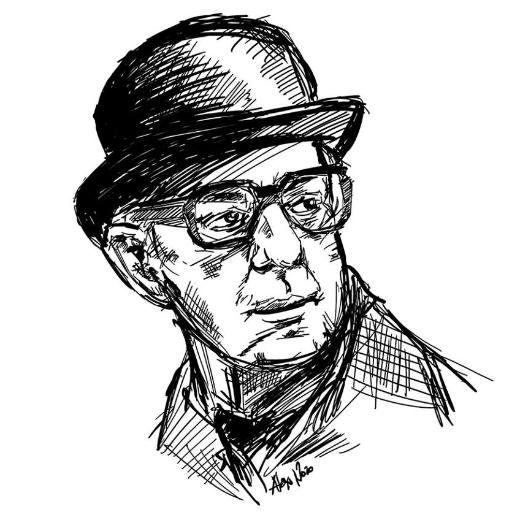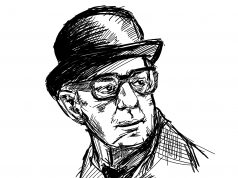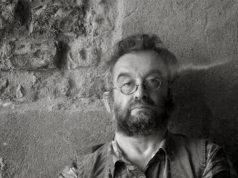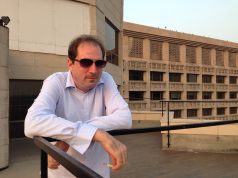As Ukraine reinvents itself after the 2014 “Revolution of Dignity” and the eruption of war with Russia, it finds itself at the crossroads of national memory. The country faces the need to make multiple complex decisions on the ways in which it will remember and commemorate the past.
Five years ago, it would have been difficult to imagine Ukraine without Lenin statues. But today you’ll be hard-pressed to find them anywhere except the territories occupied by Russia and its proxies.
At its core, the mass toppling of Lenins, which began in 2013, was a grassroots effort to shift the role of the Soviet Union in Ukraine’s history and reshape the country’s historical memory. In scholarly literature, historical memory is understood as remembrance in the collective, a process clearly separated from individual practices of remembering the past.
But for all its connections to history, this form of memory looks forward. Because historical memory attempts to capture and arrange the past, it serves a future-oriented goal: to build the community and the nation. For historical memory is not necessarily about reflecting “historical realities”. Rather, it incorporates extensive subjectivity and makes many value judgments.
This raises critical questions for any society seeking to understand its past: What do we remember? How do we remember? Who decides what we remember? And who decides who decides? Answer without foresight and consideration, and historical memory risks becoming a tool for deliberate falsification or misinterpretation of history. It risks creating myths and turning “official narratives” into unquestionable orthodoxies.
As it is in the midst of a process of reinvention, the country must grapple with several questions: To what degree can collective memory reasonably depart from historical truth or individual memory? Will today’s truth be deemed tomorrow’s falsehood or vice-versa? And how should education tackle such complexities?
Acknowledging Nuance
National memory become particularly important — and also tendentious — at times of swift and sweeping changes in society, politics, the economy, and culture. It is also critical when a nation or community has a history of oppression, massacre, or war. Both these conditions accurately describe contemporary Ukraine.
Throughout the 20th and 21st centuries, the people of Ukraine have experienced traumatic events like the Stalin-era “Holodomor” man-made famine, the Great Purge, World War II, the Holocaust, and, more recently, the illegal annexation of Crimea and the ongoing kinetic war in eastern Ukraine. There are also several positively perceived events: the 2014 revolution and the heroism of Ukrainian soldiers in the war with Russia, for example.
How can Ukraine successfully memorialize these events without ideologizing them or letting them come too far unmoored from historical fact? Acknowledging that complexities and intricacies exist — and dismissing the idea that memory can be perfectly impartial — is a first step that may provide caution against unrealistic expectations. The nation must still be built and interpretations of history will play a critical role.
Theory and politics aside, there is a tangible side to collective memory and remembrance. It comes in the form of monuments and statues, of state-ordained days of remembrance, of museums, art, film, literature and more. These manifestations of memory help the public comprehend tragedy or triumph years after the events in question occurred.
But the biggest challenge for these works — and, therefore, for the public — is visualizing the scope of life lost, particularly in the “man-made” tragedies from which Ukraine has so often suffered. Most people can imagine or have seen a dead person, perhaps several. Some can visualize or have seen dozens at a time — and occasionally hundreds. But very few have witnessed thousands upon thousands of dead bodies in one place.
Whether from the Holocaust, the Holodomor, or any other large war, millions of dead are simply beyond comprehension. We know the numbers, but we cannot visualize what they mean. By nature of their sheer size, the figures are blunted of their impact.
The monuments we erect to commemorate such unfathomable human losses are often simple and understated. This is a deliberate choice intended to convey somberness, respect, and humility. They are often placed away from everyday gaze or forgotten until specific state-appointed days of remembrance call us to officially honor them. This allows people live in the present, apart from the burden of a tragic past.
But can a monument be of suitable scale that it is commensurate to the sacrifices (or sacrificed) in every town and city that suffered from murderous ideologies? Can it be easily accessible to the nation? And how can we bring remembrance into a more continuous and constant dialogue with today’s society, taking it beyond official memorial days?
We need something tangible and unmissable. Yet it must not intrude too far into daily life, lest memory become a top-down, authoritarian exercise. It must adequately impress the scope of the deaths upon us and make those numbers digestible and comprehensible. Yet it also must not inhibit life today.
How do we bring about tangible, visible remembrance that engages with the public on a daily basis and helps to forge national identity?
Symbolic Justice
As these tragic events fall further back into the chasm of time, justice increasingly becomes a matter of symbolism. Perpetrators and survivors die off naturally, having never seen their day in court.
Beyond belated prosecutions of individuals involved in the historical extermination machinery or responsible for war crimes in modern Ukraine, the highest form of justice may be ensuring that those who died or survived these atrocities are not forgotten — at least for one day of the year.
Of the millions who are believed to have perished in the Holodomor, more than eight hundred thousand have been individually identified. Now that the NKVD archives are public, the identities of countless other victims are also known (as are their individual executioners). This is to say nothing of those who died in and around World War II as non-combatants, slain either as collateral damage or by deliberate pogrom.
Individuals will continue to be identified. And it will become more and more difficult to visualize the number of victims — even as it becomes increasingly possible to personalize them. No population center, urban or rural, escaped one or more catastrophe in Ukraine.
Rebuilding
Despite the ongoing war in Ukraine’s east, efforts to rebuild the nation following the revolution continue. Infrastructure is finally seeing investment after decades of neglect. The policy of decentralization is keeping more money in local economies run by local government. Cities, towns, and villages are rebuilding themselves.
Is this not an opportunity to literally build historical memory into the country in a new and innovative ways?
One project did just that in Germany and, later, across Europe. Stolpersteine is an initiative where commemorative stones are laid outside the last known addresses of Jewish victims of the Holocaust prior to their deportation to concentration camps. Tens of thousands of these stones have been laid across Europe. They serve as a daily reminder of the dark past these places once witnessed. Rather than a statue in a pleasantly manicured public space with few visitors, each stolpersteine is a personalized monument to a victim set in a location suited to both individual and historical collective memory.
Beyond graphic images of the victims of WWI and WWII, few sights impress the scale of conflict’s price more than the miles upon miles of headstones in cemeteries at Flanders and Artois or the Auschwitz-Birkenau Memorial and Museum. They leave a permanent mark on our memory.
What impact would streets and sidewalks across Ukraine have if paved with the individual names of victims of the Holodmor, pogroms, or other mass atrocities? Would this more effective than an annual commemoration at a monument that is otherwise largely ignored?
Perhaps, one day, Ukraine will embark upon its own Stolpersteine project and place individual stones outside the last addresses of the 20th century’s countless victims. Perhaps a street in each city, town, or village could be lined with the names of local victims. A common history built, quite literally, around the millions of individuals killed by competing violent ideologies might be a way to make collective memory relevant to every part of Ukraine. And it could serve to sooth the inevitable friction between the multiple competing narratives that make up Ukraine’s history.
Nick Holmov is The Odessa Review’s political columnist. He is a writer, and consultant specializing in Ukrainian politics, civil society, local governance and security affairs. He is the founder of the widely read Odessatalk blog.




































